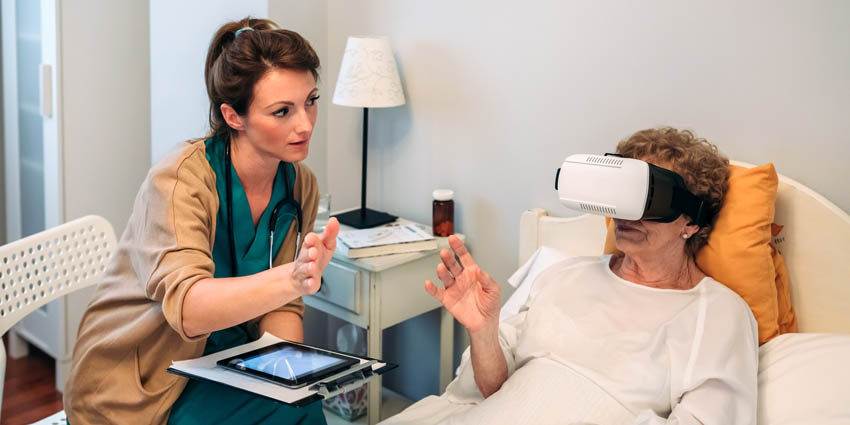Doctors may potentially use virtual reality solutions to diagnose and assess patients’ functional vision performance in clinical and real-world situations, the Ophthamology Times reported this week.
Tomas Aleman, MD of the The Sheie Eye Institute at the Perelman Center for Advanced Medicine, shared his findings in a study in early October.
In the research, Dr Aleman revealed the successes of Phase III clinical trials for gene therapy treatments tested on patients with a rare RPE65 gene mutation, which caused vision loss and impairment.
The gene mutation causes Leber congenital amaurosis (LCA) in the retina, leading to several severe symptoms in infancy such as photosensitivity, involuntary eye movements, and severe farsightedness.
Dr Aleman’s centre, which is based at the acclaimed University of Pennsylvania, Philadelphia, extended successes from LCA treatments to additional eye disorders.
Research later found that interim steps were needed to test “paradigms that can quickly, accurately, and reproducibly define the level of visual function” in clinical trials and other scenarios.
Aleman claims in the article researchers suggest VR solutions were promising when used for visual rehabilitation and research as consumer headsets had become widely available.
Study Details, Findings
Investigators in the United States and Belgium built the protocol to conduct VR orientation and mobility testing, which use commercial VR head-mounted displays, and included seven control groups aged 10 to 35 years and three LCA patients aged 7 to 18, the study revealed.
Doctors tested two LCA patients for peripheral visual function and full-field sensitivity with the VR parametres before and after they had received gene therapy to receive a score based on their perfomances, the study said.
Using the VR solution and following gene therapy treatment, patients improved across numerous metrics in the field vision performance tests, with investigators finding the measures would provide greater flexibility in deployment and testing visual parametres affected by gene therapy in the studies.
The work conducted in the study justified the investments needed to validate the solution, Aleman said in a statement, adding,
“These were obtained in the [VR orientation and mobility] protocol as an end point of functional vision in larger populations of normally sighted subjects and patients with [inherited retinal diseases] both prior to and concurrent with implementing this test in a clinical trial.”
Investigators also concluded the study had provided “proof-of-concept data” backing the use of VR orientation and mobility testing to assess LCA’s impact on patients and subsequent treatments.
Complementary Technologies
The news comes amid major advancements in contact lenses and wearables which could show additional benefits when combined with VR diagnostic solutions.
The US Food and Drug Administration (FDA) approved marketing in 2016 for lenses providing 24-hour eye monitoring to identify optimal times to measure intraocular pressure (IOP) for glaucoma patients.
The Swiss-based Sensimed Triggerfish uses sensors and silicon lenses to measure increasing eye pressures in a patient’s eyes with antennae and data recorders, which record and transmit data over wireless connections to a clinician’s computer.
Researchers at Columbia University’s Irving Medical Center developed the lenses, which can prevent damage to the cornea and ocular nerve due to increasing fluid pressure caused by glaucoma, the second-leading illness to cause blindness in patients commonly resulting from diabetes.
Researchers at the Ulsan National Institute of Science and Technology (UNIST) designed similar solutions to monitor blood sugar levels to prevent diabetic retinopathy, or retinal damaged caused by high blood pressure.
UNIST’s smart lens technologies can capture information on glucose levels from the eye and quickly send the findings to an LED display. A further solution at the Pohang Institute of Science and Technology (POSTECH) also detects glucose levels and provides insulin to treat the disease.
Quelle:




